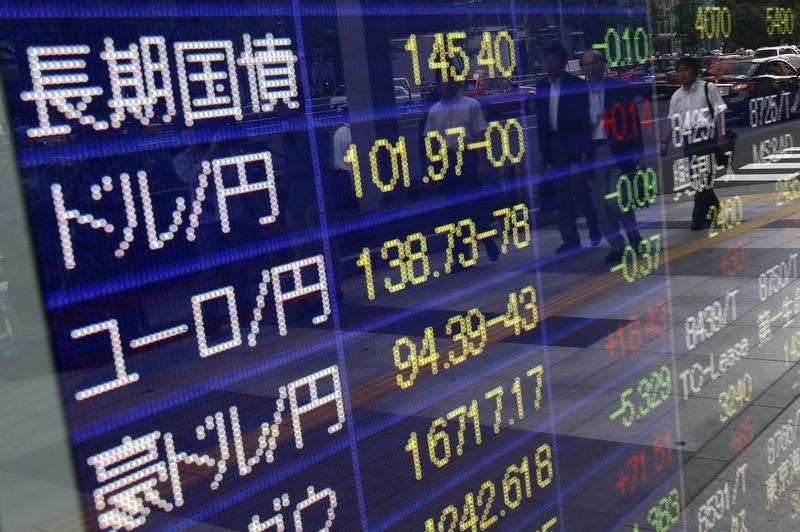Investing.com - Asian shares were mixed on Tuesday with Tokyo edging higher on manufacturing data, but other markets down.
The Nikkei 225 gained 0.09%, while the S&P/ASX 200 fell 0.52% and the Shanghai Composite dropped 0.73%.
Overnight, U.S. stocks closed slightly lower on Monday on a volatile day of trading, as a rally in the health care and energy sectors faded late in the session.
Investors reacted to a major merger in the pharmaceutical industry after Pfizer Inc (N:N:PFE) acquired Allergan (N:AGN_pa) Plc (N:AGN) in a $160 billion, the biggest deal ever in the healthcare sector.
The Dow Jones Industrial Average lost 31.13 or 0.17% to 17,792.68, while the NASDAQ Composite index fell 2.44 or 0.05% to 5,102.48, erasing some of their gains from late last week. The S&P 500 Composite index also lost 2.58 or 0.12% to 2,086.59, as six of 10 sectors closed in the red. Stocks in the Utilities, Telecommunications
Federal Reserve Chair Janet Yellen said Monday she and her colleagues hope and expect the economy will continue to expand and if that is the case, it will be appropriate to raise interest rates.
"Most of us expect the pace of that normalization to be gradual," Yellen said in a letter to Ralph Nader released by the Federal Reserve.
Nader penned an open letter to Yellen Oct. 30, calling on the policymaking Federal Open Market Committee to raise the fed funds rate off the zero lower bound where it has been since December 2008.
Japan reported its PMI for November rose to 52.8, compared to 52.1 seen and up from 52.4 in October.
Overnight, the release of disappointing U.S. housing sector data was eyed as expectations for a December rate hike by the Federal Reserve continued.
The U.S. National Association of Realtors said that existing home sales decreased by 3.4% to 5.36 million units last month from 5.55 million in September. Analysts had expected existing home sales to fall 2.3% to 5.40 million units in October.
New York Fed President William Dudley said Friday that there is a "strong case" for hiking rates at the central bank’s next meeting in December as long as economic data continues to remain solid.
Also on Monday, the Federal Reserve Board of Governors scheduled a closed-door meeting, held under expedited procedures, to review the discount rates charged by its regional banks.
The discount rate is the interest rate charged to commercial banks on loans they receive from their regional Federal Reserve Bank lending facilities, also known as the discount window. When the Fed increases the discount rate, it makes the borrowing costs for banks more expensive, decreasing the money supply in the system.
The discount rate differs from the Federal Funds Rate, which is the rate banks lend to one another on overnight loans for funds maintained at the Federal Reserve. In February, 2010, the Fed increased the spread between the discount rate and the top of the target range of the Federal Funds Rate to 50 basis points. It came nearly two years after the Fed reduced the spread to 25 points in March, 2008, in an effort to bolster liquidity.
The Federal Funds Rate has remained at a level between zero and 0.25% for nearly seven years, since December, 2008. The announcement of the previously unscheduled meeting helps raise speculation that the U.S. central bank will lift the Fed Funds Rate when it meets next on Dec. 15-16. The Fed last held an unscheduled meeting in December, 2012. An initial rate hike is viewed as bearish for gold, which is not attached to dividends or interest rates and struggles to compete with high-yield bearing assets.
